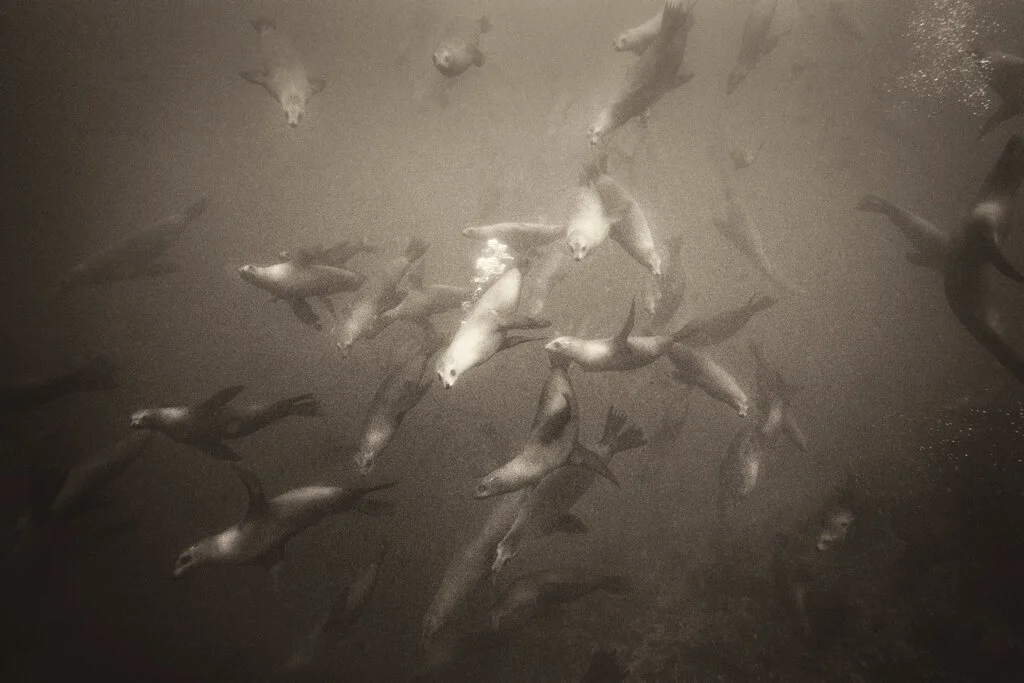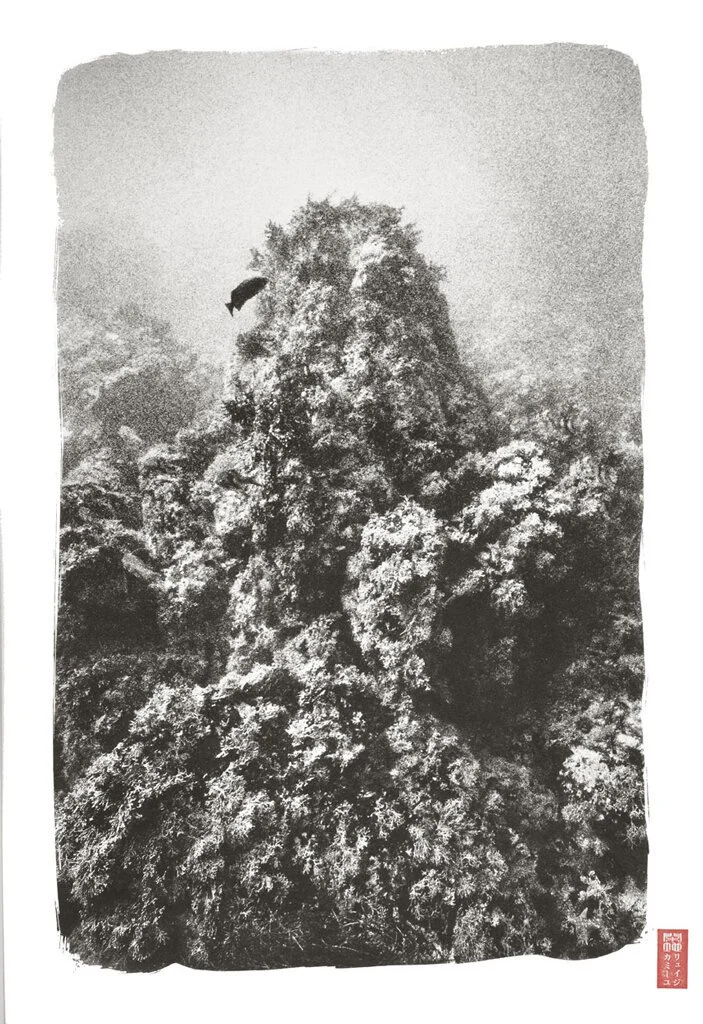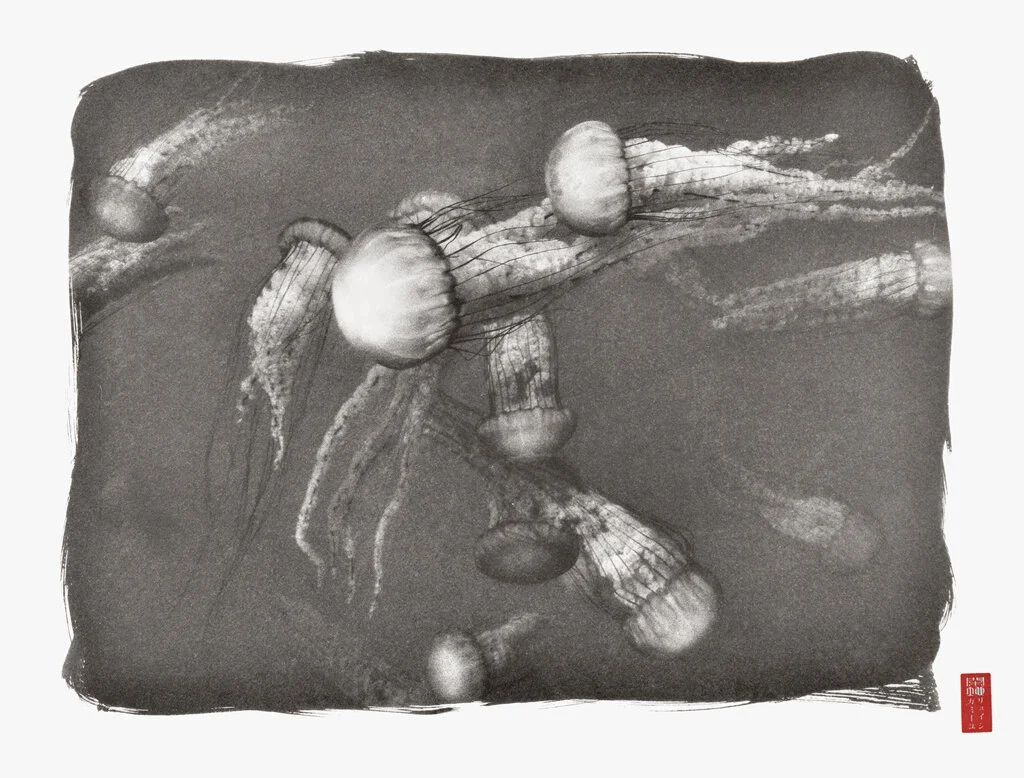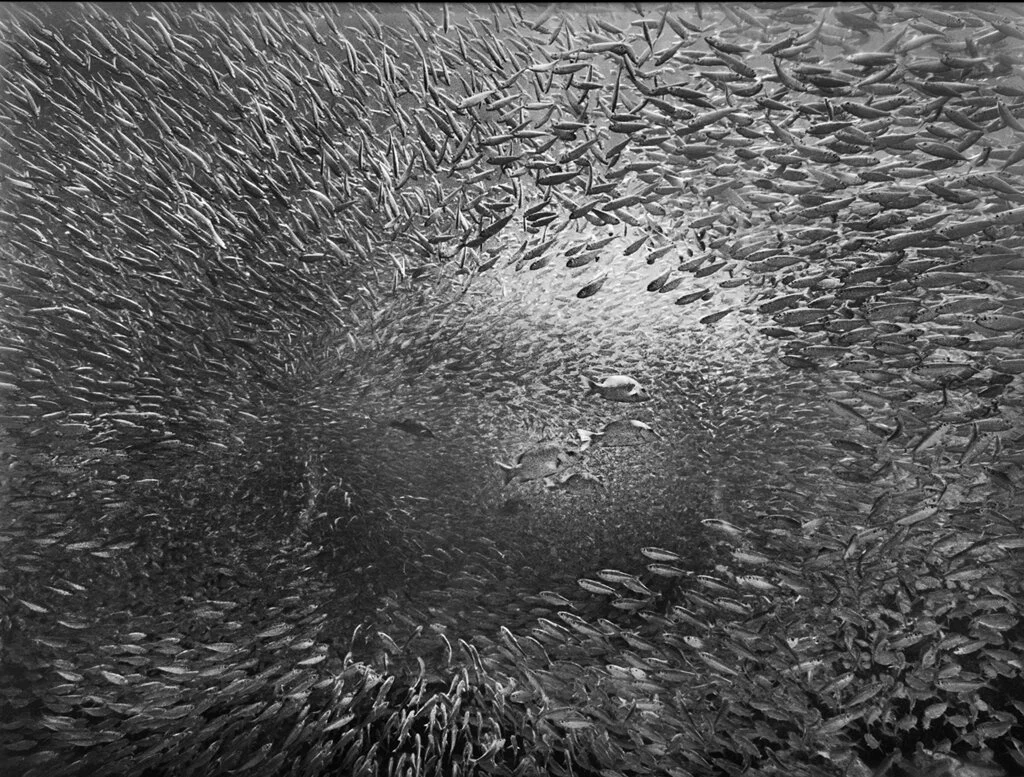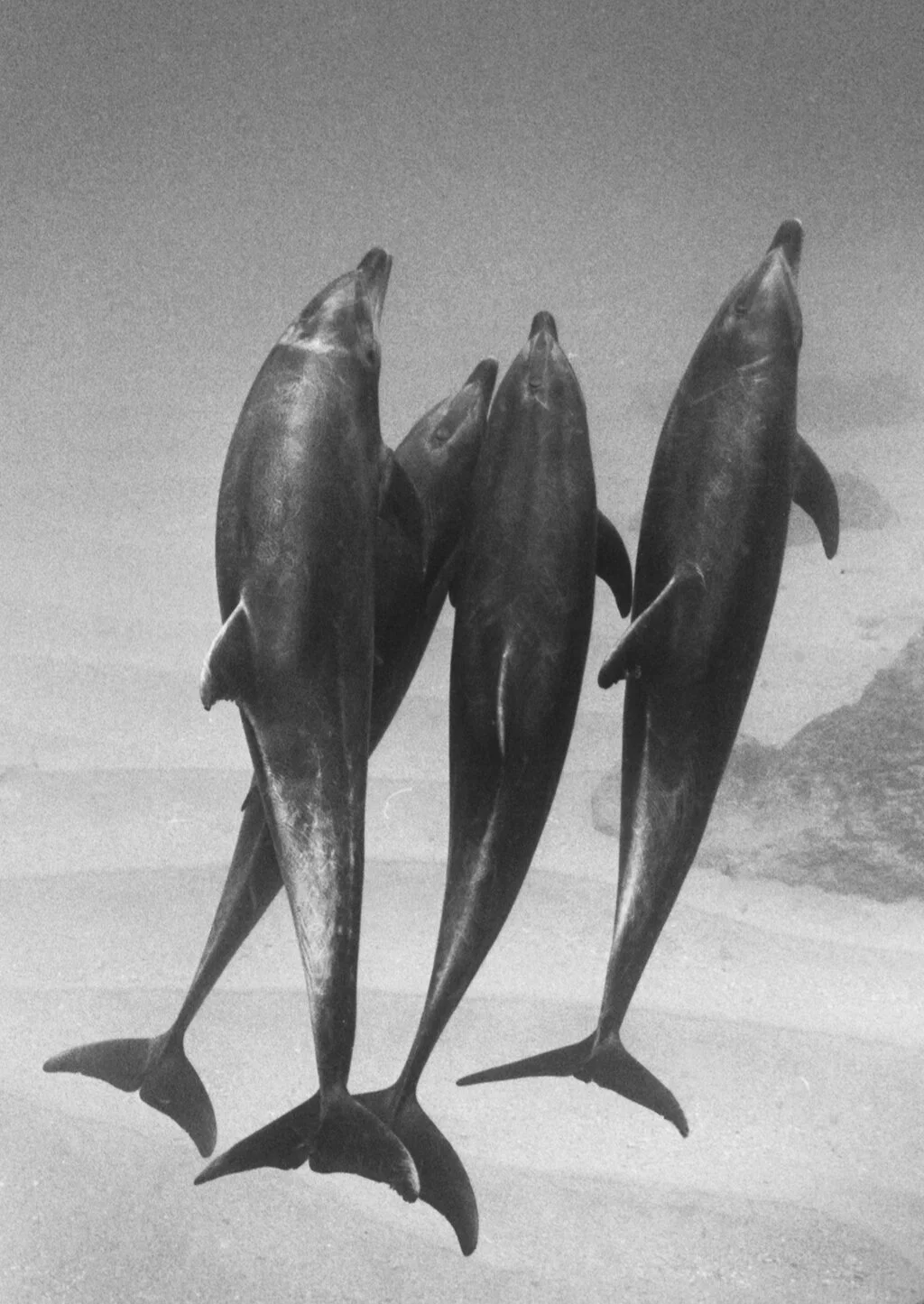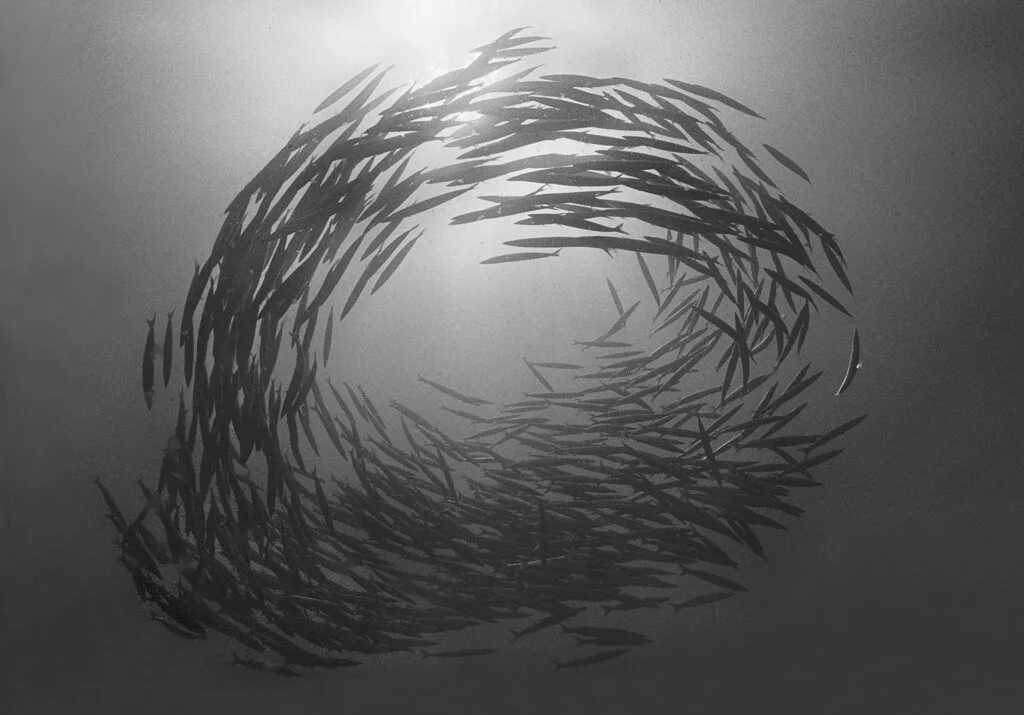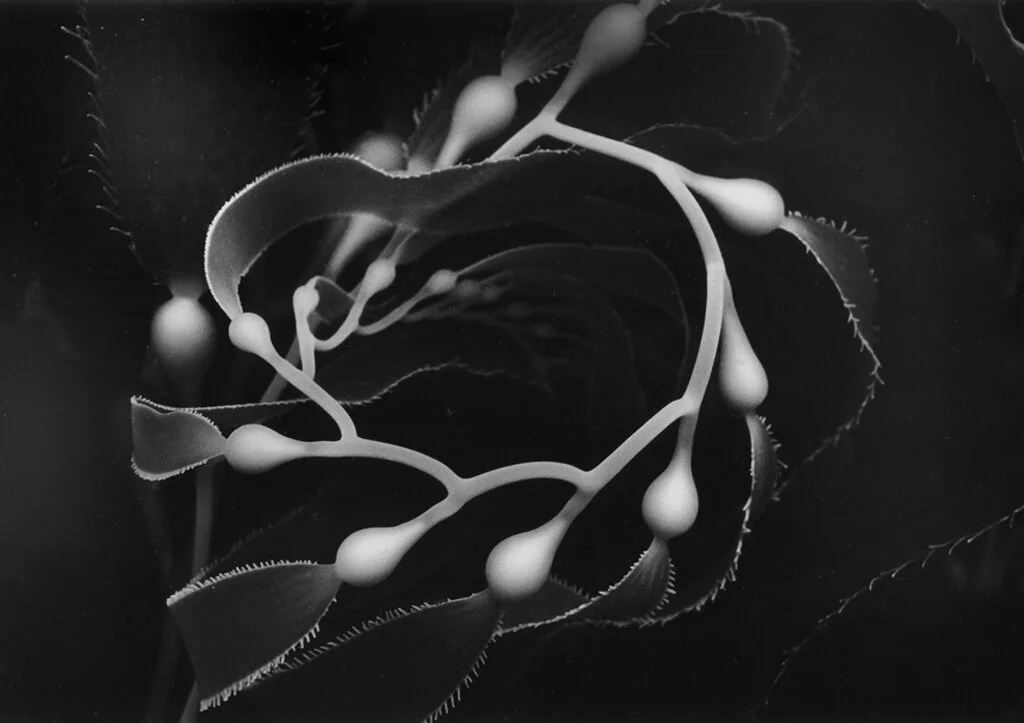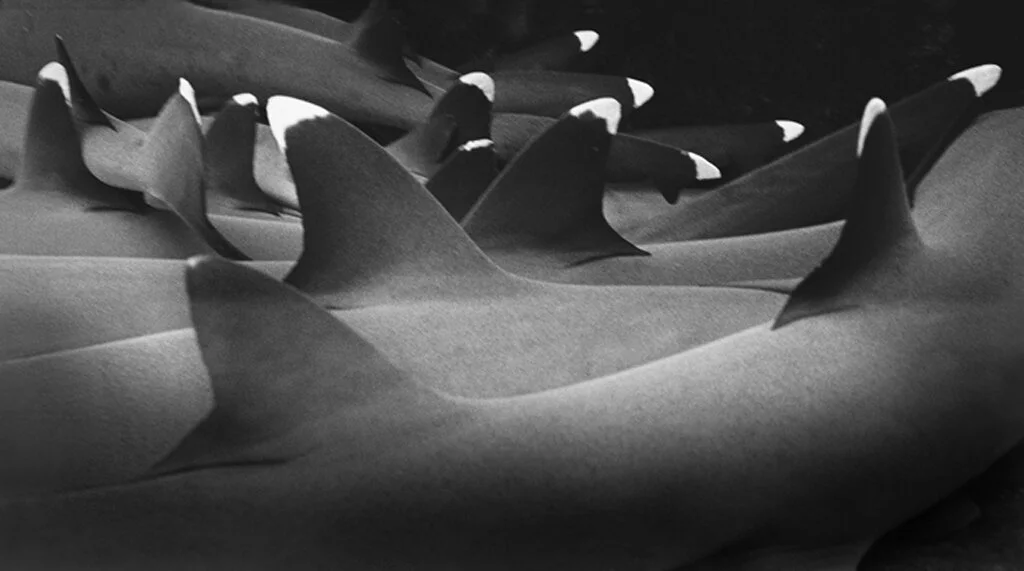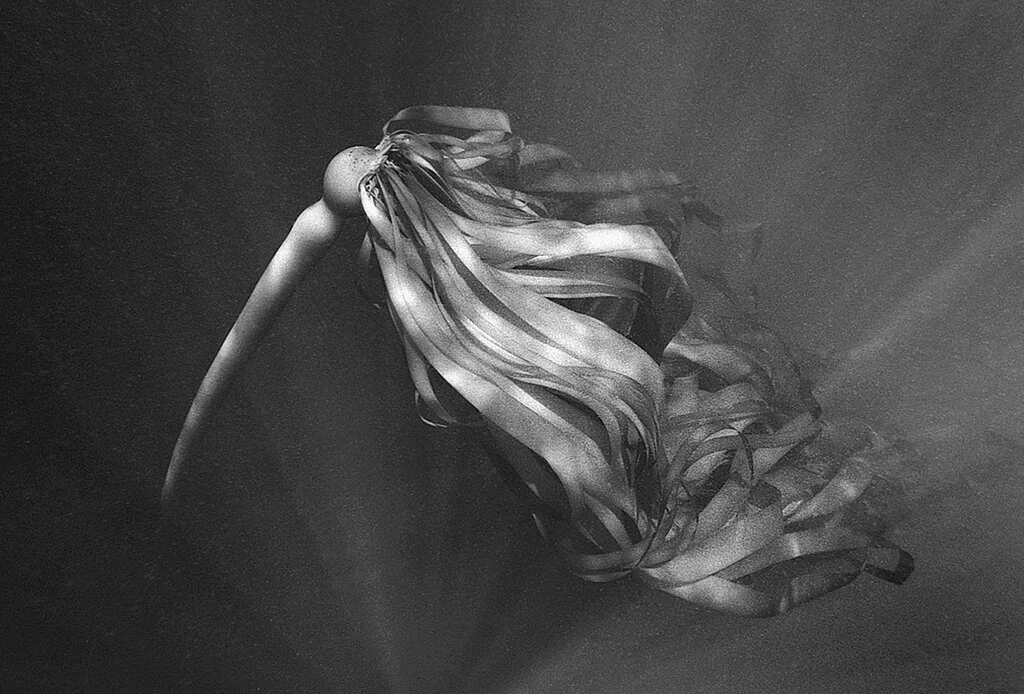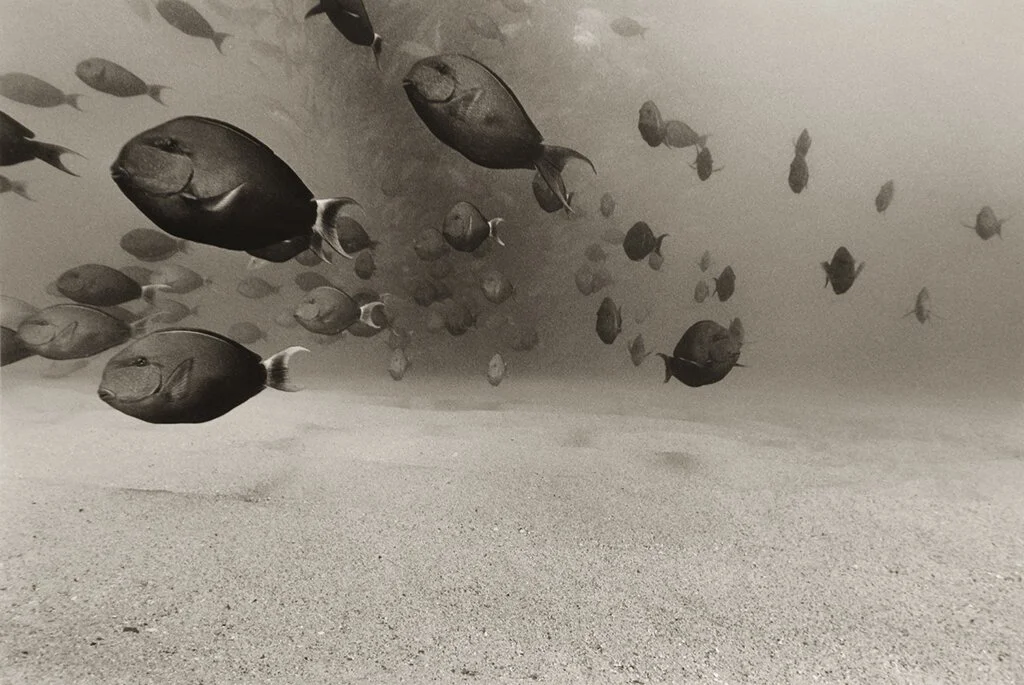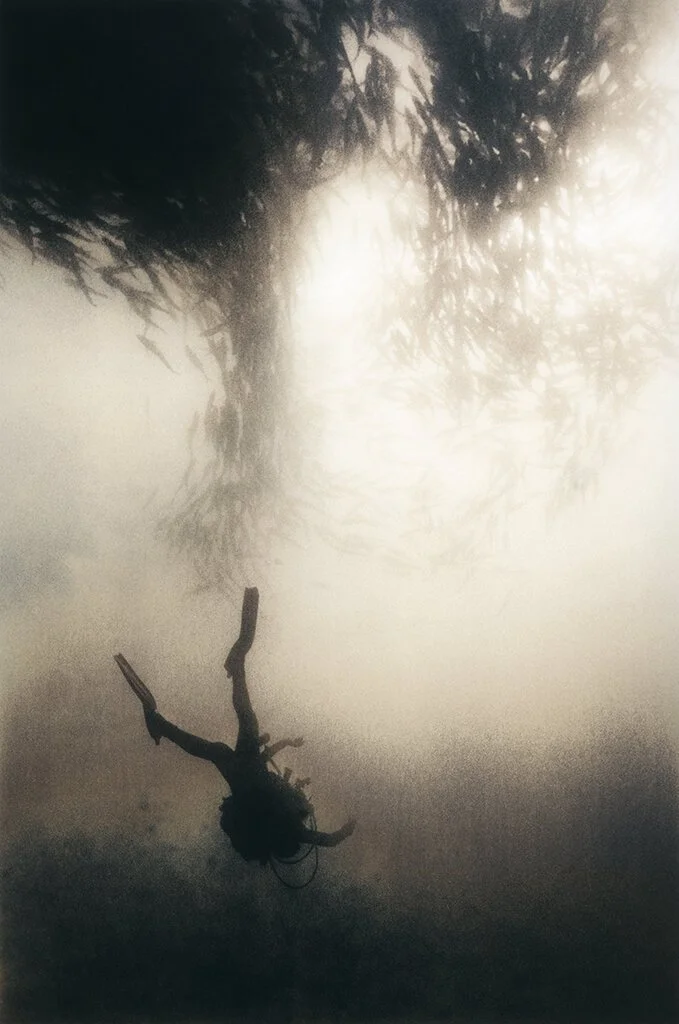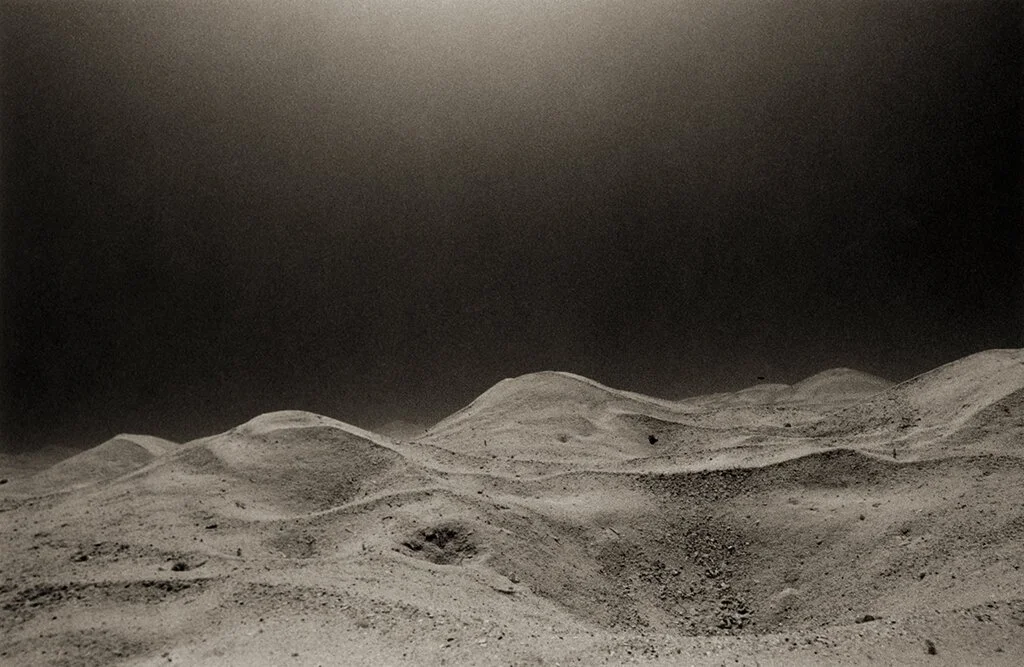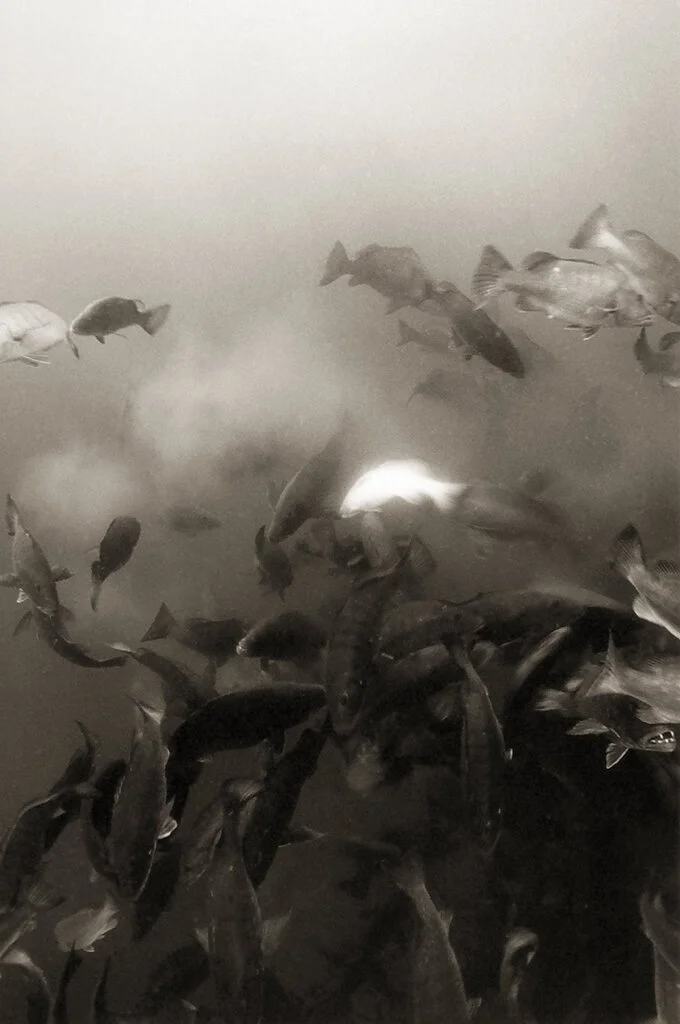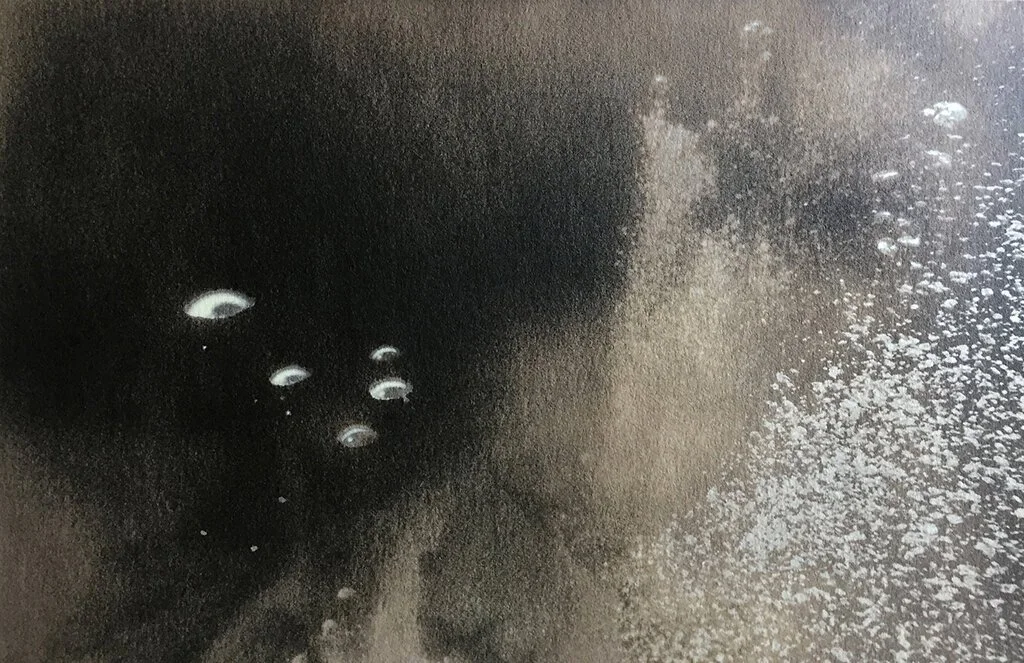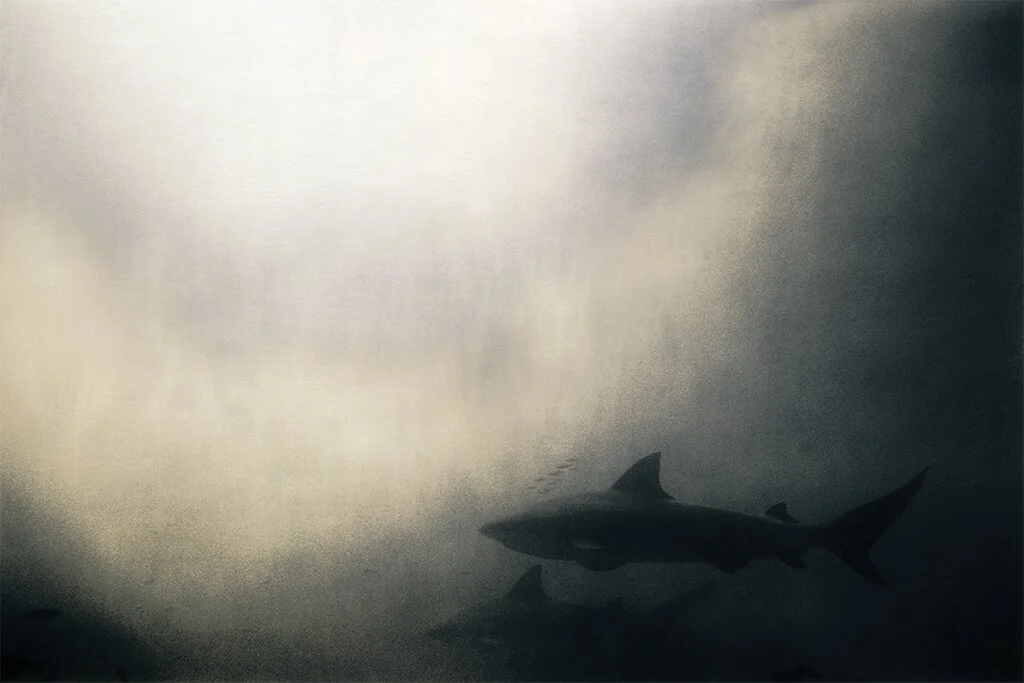Our Top 3 Favorite Underwater Photographers
Ryuijie
©Susan Turner
Ryuijie has been photographing for over 40 years. He has had numerous solo and group shows. He is represented by major photographic galleries and his work can be found in private and public collections including the Getty in Los Angeles, and the Center for Creative Photography in Tucson Arizona. His work has appeared in numerous publications including: Camera and Darkroom, Rangefinder, B&W Magazine, View Camera, and Lens Work.
The Passion for Underwater Fine Art Photography
My interest in diving began in 1962 when my parents moved to Hawaii. I grew up in a military family and in 1967 my father retired and we moved to Monterey, California. Still in high school, I made a friend who shared my love of the ocean. We began free diving and spear fishing in the waters around Monterey and Carmel. Upon graduating from high school, I enlisted in the Navy. I was stationed on Guam and gave up my speargun for a camera, a Nikonos II. I spent my off hours photographing the reefs around the island. Upon my return to the states I discovered I had developed a strong interest in photography. My interest ,however, switched to large format landscape photography, in the tradition of Ansel Adams, and Edward Weston. A style I still practice today.
I continued to dive, and in 2007 I met another dive photographer. This renewed my interest in underwater photography. I started applying my darkroom skills to the underwater landscape. Working together we began a series called “Kanchi” (The Quiet Place). These are hand made platinum/palladium photographs captured on film and processed in a traditional darkroom. Recently I added digital photography to my underwater work. The photographs are printed digitally on an Epson P8000. My equipment has always remained very simple, both on land and underwater. For my film camera I am using a Nikon N90S in an Ikelite Matrix housing. My preferred lens is a Nikkor 20mm D. My digital camera is a NIkon D7200 also in an Ikelite housing with an 8 inch dome port. The two lenses I prefer are the 10-24mm zoom and the 10.5mm fisheye which I set up to manually focus. All the photographs are made using natural light, and all the photographs in this selection were taken in the Monterey Bay.
How Ryuijie Makes it Work
I don’t have a favorite subject although Seals and Jelly fish are fun. I also like the abstract form of kelp. A lot of what happens underwater is a mater of luck. Sometimes there are animals you may only see once in a lifetime, like swimming with a school of stripped bass or being in the middle of a bait ball. I hope it happens again, but I’m glad I was able to have the experience. Being in Monterey, the number one piece of equipment would be a good wetsuit. When I’m free diving, or scuba diving quality equipment can be a life saver. I love my carbon fiber fins and low volume mask, and my dive computers keep me working within my safety limits. When scuba diving, a good regulator set and BC are a must. I’ve had the opportunity to dive in some nice locations: the Florida Keys, Kona Hawaii, Catalina, and the Mediterranean. Being in Monterey is a real plus as the Peninsula is considered a world class dive destination. A couple of memorable moments would a night dive with manta rays and free diving listening to Whales singing.
Chuck Davis
Chuck Davis is a freelance cameraman, photographer and director of photography, who specializes in underwater photography. During a career spanning over 40 years, he has filmed in worldwide locations, including Arctic Alaska, Greenland and the Antarctic. His filming credits include several IMAX productions, including two Academy Award-nominated films, Alaska: Spirit of the Wild and The Living Sea. Davis also worked as a cinematographer and still photographer on numerous expeditions with the Cousteau filming teams aboard vessels Alcyone and Calypso, working with the late Jacques Yves Cousteau and his son Jean-Michel during production of the Rediscovery of the World TV series and later on Jean-Michel Cousteau’s award-winning Ocean Adventures PBS series.
His feature film experiences include underwater 2nd unit filming for films such as Warner Brother’s Sphere and Walden Productions,’ Chasing Mavericks. Davis’ still photography has been widely exhibited in museums and galleries and published in magazines such as LIFE, Lenswork, B&W, Silvergrain Classics, National Geographic, ORION, and BBC Wildlife; he is the author/photographer of California Reefs (Chronicle Books). In 2017, Davis was awarded the prestigious NOGI Award for Arts by the Academy of Underwater Arts and Sciences.
What got you started in underwater photography? How long have you been doing it? What kind of Camera do you use?
Ever since my early childhood, when I would snorkel with a dime store face mask in the chilly waters off the coast of Massachusetts, I have always been fascinated with the interplay of light and water, and it still drives me today. I started free diving when I was in grade school and acquired my first set of scuba gear when I was 12. I bought my first underwater camera (an amphibious Nikonos 35mm camera) when I was 14 -- I've been diving for over 50 years now.
What type of printing do you do?
I work with black and white film negative for all of my personal underwater still photography work and I use several camera systems. I have two CONTAX 645 medium format cameras housed in custom S.L.Cine, Inc. deep water housings with corrected aspherical underwater ports -- I tend to use the Zeiss Distagon 35mm lens the most but also shoot with the Zeiss 80mm as well; I also use several Nikon F4s 35mm cameras in Aquatica deep water housings which have a variety of ports (macro and wide angle domes); I also like to shoot with the Nikonos V camera with its wonderful water-contact lenses -- the Nikkor/Nikonos 15mm, 20mm, and 28mm are my favorites. I work in my own darkroom and make silver gelatin prints on Ilford variable contrast "Classic" fiber paper using a diffusion/dichroic enlarger My enlarger is an Ilford 500H mounted on an Omega enlarger framework, and it is a superb enlarger. I am also set up to print platinum-palladium prints, but tend to work more in the the silver gelatin print medium.
What is your favorite thing to photograph underwater?
That is a really tough question. I have worked with all sorts of exciting marine subjects during my career -- a lot of "charismatic mega-fauna" like whales, dolphins and a variety of shark species, but I have to say my favorite is shooting in a giant kelp forest and our local bull kelp forests in Monterey Bay and southward off Point Lobos and northern Big Sur -- the shape and form of the kelp itself really intrigues me as a photographic subject. I love how the surface light wraps around the spherical bulbs or floats of the kelp plants (and renders them sort of sculptural, depending on the lighting the latter can look metallic porcelain-like when captured on black and white film). I also love how the kelp blades really do perform a dance in the water as they are set in motion by surface wave surge. It all feels very musical to me — the cadence or tempo is set by the sea and it varies every day — It is mesmerizing to watch and I have spent countless hours photographing these subjects over the years and and still trying to do justice to them.
What are your Top 5 Must Have pieces of equipment when photographing underwater?
Well -- in addition to the camera gear listed above) I think there are really more than five vital items, depending on what type of diving or underwater photography you are doing. But I will try to list the basics here. I have used a variety of diving techniques over the years: free diving or breath-hold diving, SCUBA diving as well as closed-circuit mixed gas rebreathers including the use of different "mixed gases" such as "tri-mix" (which is a mixture of oxygen, helium and nitrogen), heliox (which is a mixture of helium and oxygen — the helium reduces the narcotic effect of breathing nitrogen at deep depths); I also use NITROX which is mixture of nitrogen and oxygen but with a higher than normal "sea level" atmospheric amount of oxygen (higher than 21 percent oxygen). So -- when photographing underwater you need some kind of life support -- if free diving you have just one breath and you need to relax and "breath up" on the surface and conserve your energy when you descend -- in free diving mode it helps to have a low volume dive mask, long free diving fins, a flexible neoprene "Marseille-type" weight belt with proper weighting as well as a well-fitting wet suit -- I prefer the new limestone-based "split cell" neoprene as it so flexible and warm -- also if I am scuba diving (and I may wear just a single tank, a set of doubles with an additional "sling" bottle with decompression gas). Scuba diving requires a lot more gear -- much of it heavy and bulky -- you need to have a well maintained breathing regulator that delivers high pressure breathing gas from the scuba cylinder(s) to your lungs, and also it is important to have an accurate submersible pressure gauge to monitor your gas supply when you're underwater; I usually equip my regulator with an alternate breathing source which is a 2nd stage mouthpiece often called an "octopus" to share breathing gas with a dive partner in an emergency or to provide redundancy in the very rare event of a primary 2nd stage malfunction. You also need to have a good decompression meter which also has its own depth gauge and timer. When diving in colder temperate water for long periods of time (and on deeper dives) or working in Arctic or Antarctic waters, I will wear a dry suit which has special watertight seals on the neck and wrists (the feet are built into the suit) and I wear a thick Polar Tech undergarment under the suit --sometimes in icy waters I will use argon gas (via a special small tank that is clipped to my tank harness) to inflate my dry suit as it is a much denser gas and provides a much better insulation from than regular compressed air. In freezing waters I will also use special dry diving gloves as well. I use DUI drysuits that have served me well for many years.
Closed circuit rebreathers are great tools for underwater photography but are much more expensive and require more maintenance and advanced training --- they provide extended bottom time as the rebreather recycles the diver's expired breathing gas by scrubbing out the CO2 with a special absorbent canister, in its "breathing loop" and allows the unused oxygen, nitrogen and/or helium to recirculate. Rebreathers, by recycling the helium diluent gas, save divers substantial amounts of money as helium gas is expensive. Closed circuit rebreathers in my opinion are the most quiet and non-intrusive of all diving methods and allow a diver to blend in on the bottom and to sit there motionless for hours with no noisy; bubbles being exhaled -- they are great for filming fish and other sound-sensitive creatures. As an added bonus, when working in freezing waters, the CO2 scrubber unit in a rebreather creates heat and water vapor and that added heat (which heats the "scrubbed" inspired breathing gas being delivered by the rebreather) helps reduce the effects of low temperature on a diver's physiology, affording longer and more comfortable and efficient dives.
Your most memorable experience shooting underwater and/or a fun story
This is another very tough question to answer as I have been very fortunate to experience some so many memorable dives over the years in worldwide locations, but I think the most exciting experience for me was filming killer whales feeding on sharks in a remote part of Papua New Guinea when I was working as a cameraman for the Cousteau Society working from vessels Calypso and Alcyone during a a three-month expedition back in 1988. We spent nine hours in clear blue deep waters one magical day with some killer whales feeding off the small Island of Wuvulu (located on the extreme northwest corner of PNG not far from West Papua or Irian Jaya). The killer whales would dive deep into blue water and emerge minutes later before us with reef sharks in their mouths and they always flipped the sharks upside down in their mouth which evidently makes the sharks catatonic; the killer whales were a threesome when we first encountered them in the morning -- a female and two males. In the morning they caught and ate a manta ray and by the afternoon were feeding on reef sharks -- what was amazing to all of us in our filming team was that the sharks were feeding in deep water and could have gone anywhere once they caught their prey, but they came back to us as if to show us what they were catching --one of the males swam off in the afternoon but the female and one male remained with us and kept feeding on sharks -- once they emerged towards the ocean surface they would pass the shark back and forth as if playing with their food and finally they tear it apart and eat it and we suspect the oil-rich shark liver was a key item they were feasting upon. It was a series of filming dives I will never forget!
Robin Robinson
Robin V. Robinson is a Carmel, California, photographer who is curious about the way we look at the planet and ourselves. She has photographed underwater for over 30 years and her background in engineering and music contribute to her unique way of seeing. A strong belief in co-creating leads her into surreal and energetic territory using experimental darkroom processes while honoring the local f64 spirit. She exhibits internationally and her work is held in museums and private collections.
What got you started in underwater photography?
Early in my life I was working for an airline as an engineer and travelled constantly. It was easy to get into the ocean on the weekends in warm places so I learned how to Scuba dive on one of my trips. It was a natural progression to get an underwater camera right away because I had photographed on land since high school. I’ve had the camera with me on every single dive since.
How long have you been doing it?
I have been photographing underwater since I learned how to dive 32 years ago.
What kind of camera do you use?
I use a Nikonos V and have used that model (the orange one) since 1989 when I started diving. I mostly use a 15mm Nikonos lens which is a primo piece of glass. Because it’s underwater, the wide angle doesn’t appear quite as wide.
What type of printing do you do?
I print in the darkroom from my negatives using traditional b/w processes. In addition, I often tone using Kodak Brown toner. I recently discovered Lith printing and now use copper bleach on my b/w prints, then redevelop in Lith developer. This creates multiple tones and a different look and feel to the grain. It’s a really fun process because each print is unique and can take off into a completely transformed look.
What is your favorite thing to photograph underwater?
I am obsessed with the bottom – especially sand – and find myself sinking down and hovering there. The perspective is like being on land, seeing the contours and shapes of the Earth. This fascinates me.
What are your Top 5 Must Have pieces of equipment when photographing underwater?
My must-haves underwater are really simple: my loaded Nikonos V, the Nikonos 15mm lens, my dive computer, air, and a good guide to watch my back.
Your most memorable experience shooting underwater and/or a fun story
I was fortunate enough to observe a snapper spawning event in Belize with hundreds of fish swarming in a highly energetic ball, a mating behavior. The energy literally had me finning backwards, the fish moving at lighting speed, while producing spawn into the water. To top it off, whale sharks cruised through the spawn for a meal. I felt super-charged, and very grateful for this rare experience and for an image which I hope conveys the life force.
